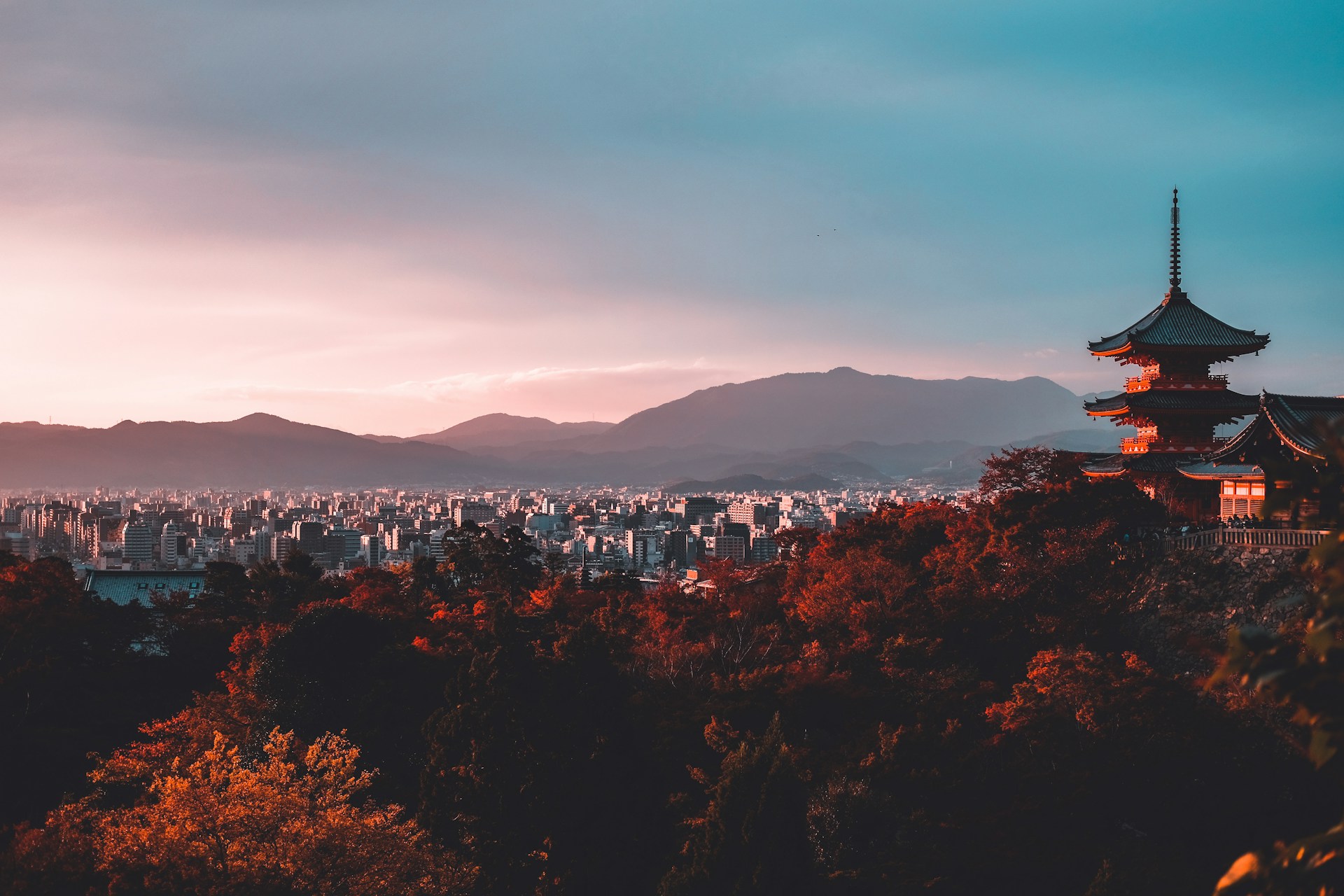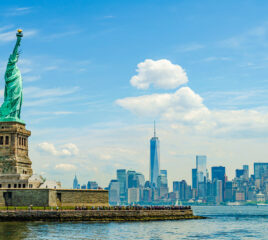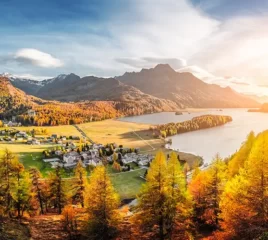Note that iPhone devices from Mainland China aren’t eSIM compatible. Also iPhone devices from Hong Kong and Macao aren’t compatible (except for iPhone 13 Mini, iPhone 12 Mini, iPhone SE 2020 and iPhone XS)
Japan is one of those places that feels magical no matter when you visit, but timing your trip carefully can really make a difference. From the iconic cherry blossoms in spring to the vibrant festivals of summer, each season has its own vibe. Whether you’re into skiing, hiking, or just enjoying good weather, there’s a perfect time for everyone to explore this fascinating country. Let’s break down the best times to visit Japan based on what you’re looking for.
1. Cherry Blossom Season
Cherry blossom season is undeniably one of the best seasons to visit Japan. These delicate pink flowers, known as sakura, transform the landscape into something straight out of a dream. If you’re wondering about the best time to see cherry blossoms in Japan, aim for late March to mid-April. The timing varies depending on where you go, with blooms starting earlier in southern regions like Kyushu and peaking later in northern areas like Hokkaido.
Why Cherry Blossom Season is Special?
- Hanami (Flower Viewing): This age-old tradition involves gathering under cherry trees to admire their beauty. Families, friends, and even coworkers enjoy picnics with food, drinks, and laughter.
- Festivals Everywhere: Cities like Tokyo and Kyoto host vibrant Sakura festivals. In Tokyo, check out the Ueno Sakura Festival, while Kyoto offers stunning views at Maruyama Park.
- A Busy but Magical Time: While it’s one of the busiest periods for Japan’s tourism season, the experience of walking through Sakura-lined streets is unforgettable.
Tips for Planning Your Visit
- Book early. Hotels fill up quickly during this time.
- Check bloom forecasts. The Japan Meteorological Corporation provides updates starting in January.
- Visit iconic spots like the Meguro River in Tokyo or the Philosopher’s Path in Kyoto.
Cherry blossom season is more than just a visual treat—it’s a cultural celebration that brings people together. Whether you’re in bustling Tokyo or serene Kyoto, sakura season captures the heart of Japan like no other.
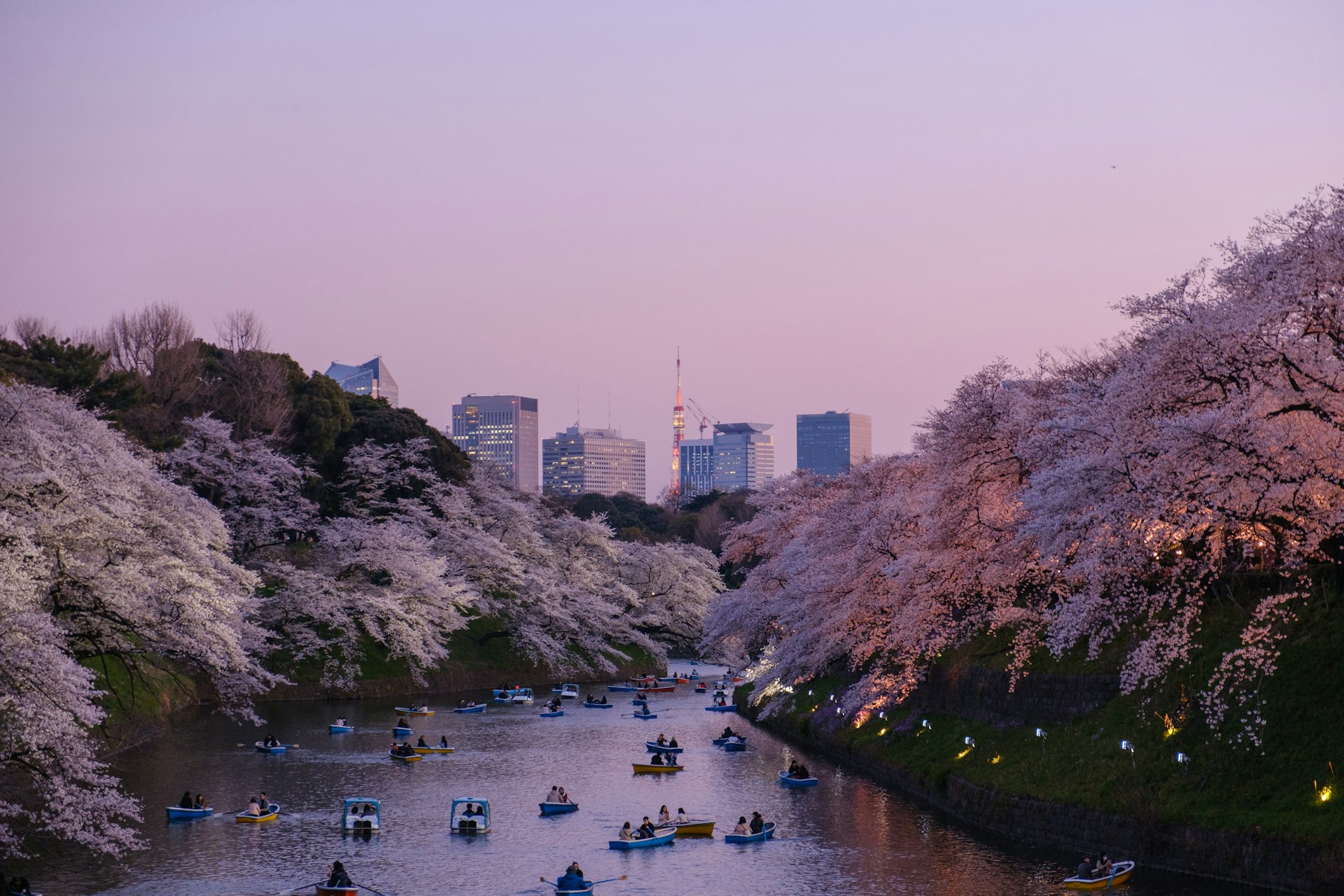
For those planning their trip, remember this is also the best time to visit Tokyo and Kyoto for their unique blend of natural beauty and urban charm.
2. Autumn Foliage
Autumn in Japan is a season of breathtaking beauty, with nature putting on a spectacular show. Starting in late September and lasting through November, the foliage transforms into a vibrant tapestry of red, orange, and yellow. The term “momijigari” refers to the traditional pastime of seeking out the most stunning autumn leaves, a favorite activity for both locals and visitors.
Best Spots to Enjoy Autumn Colors
- Kyoto: The temples and gardens in Kyoto, such as Kiyomizu-dera and Arashiyama, are famous for their picturesque fall landscapes.
- Nikko: Known for its UNESCO World Heritage sites, Nikko’s forests and waterfalls are even more enchanting in autumn.
- Osaka Castle: The historic castle surrounded by fiery red maple trees is a must-see.
Why Visit in Autumn?
- Comfortable Weather: With temperatures ranging from 62°F to 69°F, the crisp air makes exploring outdoors enjoyable.
- Photography Heaven: The vivid colors create a perfect backdrop for capturing unforgettable moments.
- Seasonal Delights: Autumn is also harvest season, offering treats like roasted chestnuts, persimmons, and freshly brewed sake.
If there’s a time to visit Japan for its natural beauty, autumn is it. The colors, the Japanese food, and the mild weather make it unforgettable.
For travelers flying in, Changi Airport offers excellent connectivity and Japan eSIM compatibility is excellent here, making your journey to Japan even smoother.
3. Winter Festivals
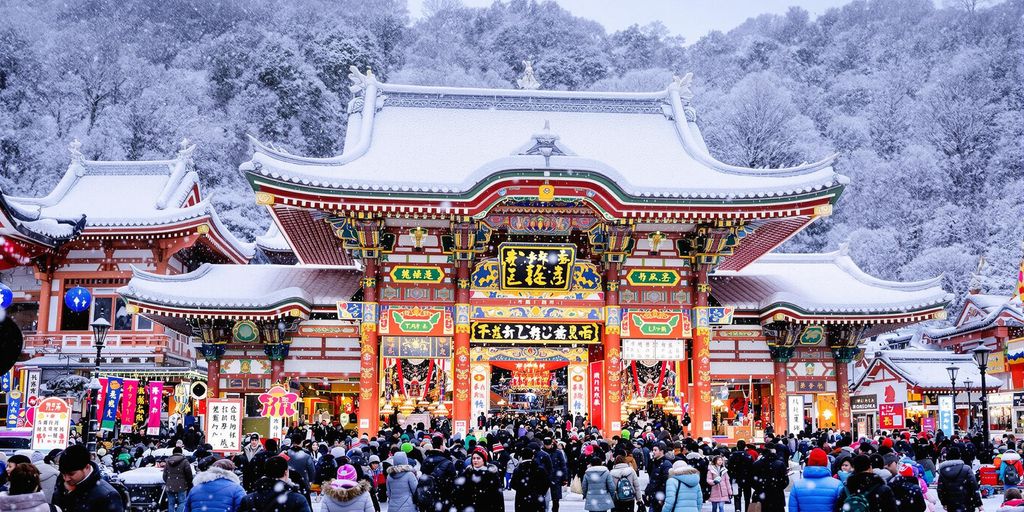
Winter in Japan is not just about snow and skiing; it’s also a time for some of the country’s most unique and vibrant festivals. February stands out as the best month for experiencing these cultural treasures, with events that will leave you in awe.
Sapporo Snow Festival
One of the most iconic winter events in Japan, this festival transforms Sapporo’s Odori Park into a wonderland of massive snow and ice sculptures. These creations range from intricate castles to life-sized animals, and they’re lit up beautifully at night. It’s a must-see for anyone visiting Hokkaido in February.
Nagasaki Lantern Festival
This festival brings a splash of color to the chilly winter days. The streets of Nagasaki are adorned with thousands of vividly designed lanterns, celebrating the Lunar New Year. You’ll also find parades, traditional performances, and food stalls showcasing local delicacies.
Otaru Snow Light Path Festival
Held in the charming port town of Otaru, this festival features streets and canals illuminated by candles and lanterns. The soft glow against the snowy backdrop creates a magical atmosphere, perfect for a romantic evening stroll.
Emperor’s Birthday Celebration
In Tokyo, February also marks the Emperor’s birthday, a rare occasion when the public is allowed onto the grounds of the Imperial Palace. It’s a unique chance to witness a formal Japanese tradition while enjoying the scenic beauty of the palace gardens.
Winter festivals in Japan offer a mix of art, tradition, and community spirit. They’re an incredible way to experience the country’s culture during the colder months.
4. Summer Matsuri
Summer in Japan is all about vibrant festivals, or matsuri, and it’s one of the best times to visit Osaka and beyond. These festivals are not just events; they’re an explosion of culture, tradition, and community spirit. From massive parades to colorful fireworks, there’s something magical about Japanese summers.
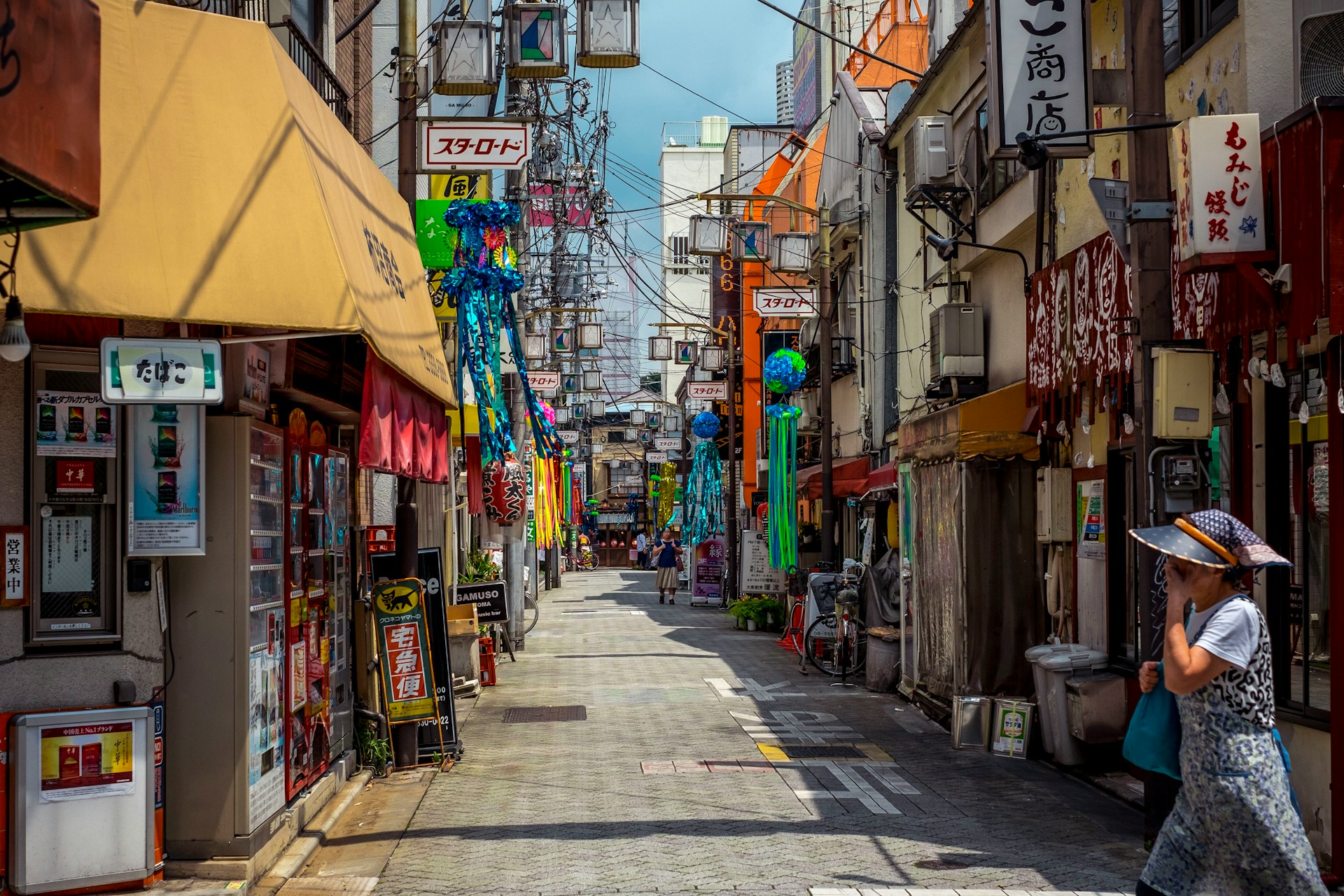
Must-Visit Summer Festivals
- Gion Matsuri (Kyoto): Held throughout July, this is one of Japan’s most famous festivals. Enormous, elaborately decorated floats parade through the streets, accompanied by traditional music and celebrations.
- Nebuta Matsuri (Aomori): Early August brings illuminated floats, taiko drumming, and energetic dances to the streets of Aomori. The glowing floats at night are unforgettable.
- Awa Odori (Tokushima): Known as the “Dance of Fools,” this festival lights up mid-August with thousands of dancers in colorful costumes moving to traditional music.
What Makes Summer Matsuri Special?
- Firework Displays: Cities like Tokyo, Nagaoka, and Osaka light up the night skies with incredible fireworks shows during these festivals. It’s an iconic summer experience.
- Street Food Galore: Think yakitori, takoyaki, kakigori (shaved ice), and more. Matsuri are a feast for the senses.
- Traditional Attire: Many attendees wear yukata (light summer kimono), adding to the festive vibe.
If you’re looking for the perfect mix of tradition and excitement, summer matsuri are unbeatable. Whether you’re watching a parade or enjoying festival snacks under the fireworks, you’ll feel like you’ve stepped into another world.
Make Your Summer Matsuri Travel Special and Affordable
Stay online in Japan with instant activation of your eSIM
While the heat and humidity can be intense, the lively atmosphere of these festivals makes it worth it. Don’t forget to pack light, breathable clothing and stay hydrated. If you’re planning a trip during this season, make sure to check out the festival schedules in advance to catch these unforgettable celebrations!
5. Spring Weather
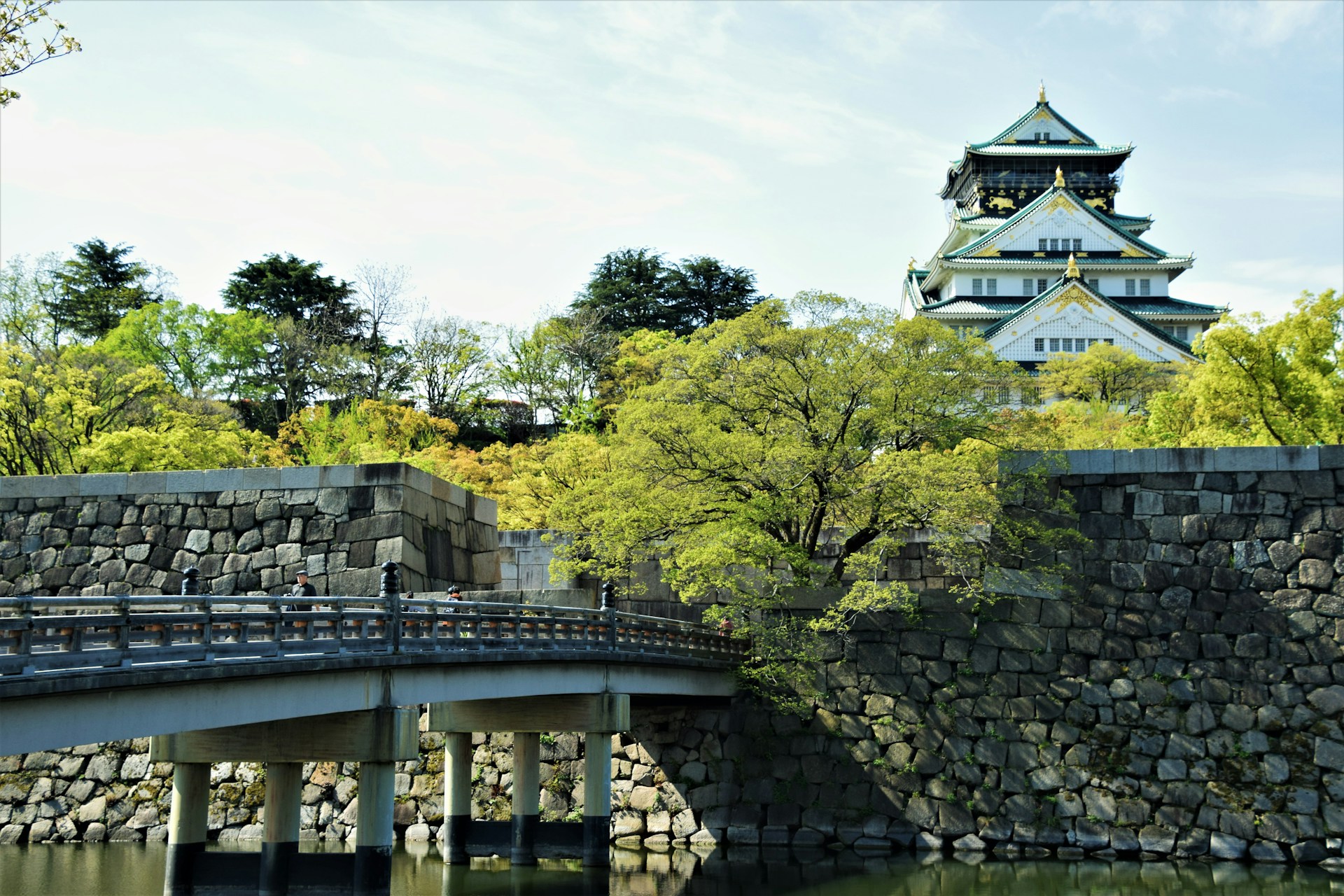
Spring in Japan is a magical time, running from March to May, when the country begins to shake off the winter chill. Mild temperatures and blooming landscapes make it one of the most inviting seasons to visit. Here’s what you can expect:
- Comfortable Weather: Temperatures typically range from 55°F in March to about 73°F in May, offering a pleasant climate for outdoor activities.
- Vibrant Nature: While cherry blossoms steal the spotlight in late March and early April, other blooms like plum blossoms and wisteria add their own charm throughout the season.
- Festivals Galore: Spring is packed with events, from the Mito Plum Blossom Festival in March to the Great Wisteria Festival that stretches from mid-April to May.
Spring in Japan is more than just a season—it’s a celebration of renewal and beauty, where every corner seems to come alive with color.
If you’re planning to visit, keep in mind that popular spots like Tokyo and Kyoto can get crowded, especially during cherry blossom season. But the lively atmosphere is part of the experience, making spring a truly special time to explore Japan.
6. Fall Weather
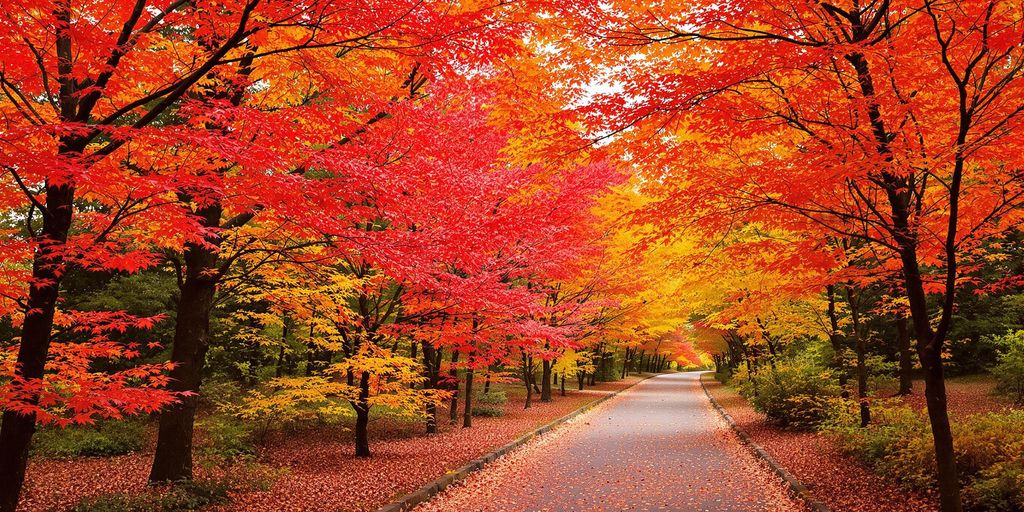
Autumn in Japan is a season of transformation, both in nature and experience. The months of September, October, and November bring cooler, crisp air and a vibrant display of red, orange, and gold foliage. This is, without a doubt, one of the most visually stunning times to visit Japan.
Highlights of Fall Weather:
- Comfortable Temperatures: Ranging from around 69°F in September to 62°F in November, the weather is perfect for outdoor activities.
- Changing Leaves: Famous spots like Kyoto and Nikko turn into breathtaking landscapes filled with colorful trees.
- Fewer Crowds: Compared to summer, fall offers a quieter travel experience.
Activities to Enjoy:
- Nature Walks and Hikes: Explore trails surrounded by fall colors, especially in Hokkaido where the leaves change earlier.
- Seasonal Cuisine: Savor autumn delicacies like roasted chestnuts, matsutake mushrooms, and freshly harvested rice.
- Cultural Festivals: Participate in traditional events like the Takayama Autumn Festival, showcasing floats and performances.
Autumn in Japan is more than just a season—it’s an invitation to slow down, appreciate nature’s beauty, and immerse yourself in the culture. Whether you’re strolling through a temple garden or enjoying a bowl of warm soba, fall makes everything feel a little more magical.
If you’re planning a trip, this season offers a little bit of everything: natural beauty, delicious food, and a peaceful atmosphere that’s hard to beat.
7. Winter Sports

Winter in Japan is a dream for anyone who loves skiing, snowboarding, and other cold-weather activities. Japan’s northern regions, especially Hokkaido, are famous for their powdery snow, often referred to as “Japow” by enthusiasts. But you don’t have to go all the way north—Nagano, just a few hours from Tokyo, is another top-notch destination, having hosted the 1998 Winter Olympics.
Popular Ski Destinations
- Niseko, Hokkaido: Known for its consistent snowfall and excellent powder conditions.
- Hakuba Valley, Nagano: Offers a variety of slopes suitable for all skill levels.
- Nozawa Onsen, Nagano: Combines great skiing with traditional hot spring experiences.
Tips for Winter Travelers
- Pack layers! Temperatures vary widely, from freezing in Hokkaido to milder weather in southern Japan.
- After hitting the slopes, relax in an onsen (hot spring) to soothe tired muscles.
- Consider visiting Jigokudani Monkey Park near Nagano to see snow monkeys enjoying their own hot springs.
Winter sports in Japan aren’t just about skiing or snowboarding—they’re about immersing yourself in a season that blends adventure with culture. From the thrill of the slopes to the serenity of an onsen, winter here is unforgettable.
For January travelers, destinations like Niseko and Nagano offer unparalleled experiences. Pair your adventure with a reliable travel tool like Voye Global eSIM to stay connected and share your snowy escapades effortlessly.
8. Hiking in Hokkaido
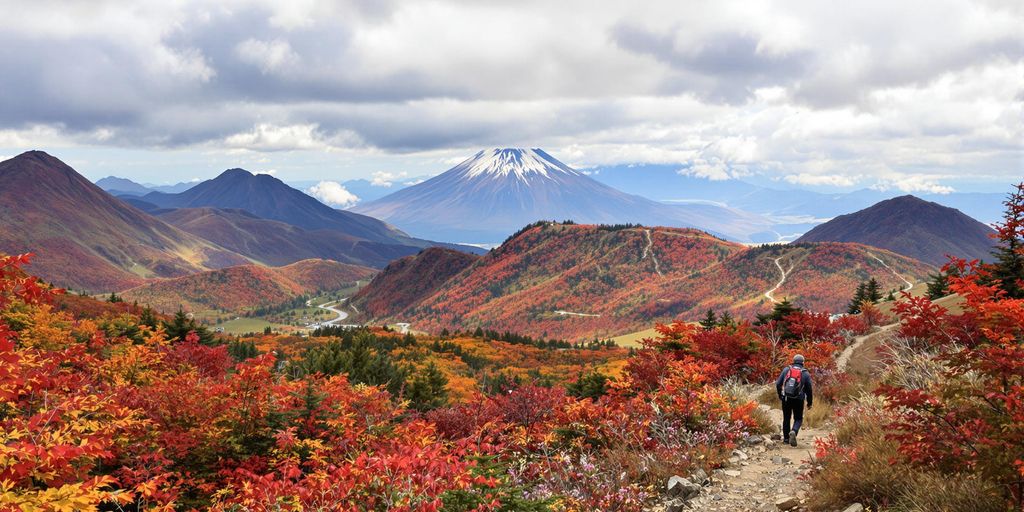
Hokkaido is a dream destination for nature lovers and hiking enthusiasts. Known for its untouched landscapes, mild summers, and breathtaking trails, this northern island offers some of the best hiking experiences in Japan. Whether you’re a seasoned trekker or just looking for a peaceful walk in nature, Hokkaido has something for everyone.
Why Hokkaido is a Hiker’s Paradise?
- Diverse Trails: From beginner-friendly paths like the Shiretoko Five Lakes to challenging climbs up Mount Asahi, Hokkaido caters to all skill levels.
- Stunning Scenery: Think lush forests, crystal-clear lakes, and sweeping mountain views. In autumn, the foliage bursts into vibrant reds and oranges, making it the best time to visit Hokkaido for hikers.
- Cool Weather: Hokkaido’s summer temperatures are cooler compared to the rest of Japan, offering the best weather to travel to Japan for outdoor activities.
Best Times for Hiking
The hiking season in Hokkaido typically runs from late spring to early autumn. Here’s a quick breakdown:
| Season | Highlights | Notes |
| Late Spring | Melting snow and blooming wildflowers | Trails may still be muddy in places |
| Summer | Comfortable temperatures | The cheapest time to visit Japan |
| Early Autumn | Stunning fall colors | Popular season, so book in advance |
Essential Tips for Hikers
- Pack Smart: Bring layers, as weather can change quickly, especially in the mountains.
- Stay Connected: Consider using eSIMs data plans for reliable internet access to maps and emergency contacts.
- Respect Nature: Stick to marked trails and carry out all trash.
Hokkaido’s trails are more than just paths—they’re gateways to some of the most serene and awe-inspiring corners of Japan. If you’re wondering about the best time to fly to Japan, align your trip with Hokkaido’s hiking season for an unforgettable adventure. Don’t forget to read our guide on Japanese Travel Essentials.
9. Golden Week
Golden Week, which takes place from April 29 to May 5, is one of Japan’s busiest travel periods. This week-long celebration is packed with national holidays, including Shōwa Day, Constitution Day, Greenery Day, and Children’s Day. It’s a time when locals and tourists alike take advantage of the spring weather to enjoy festivals, traditional events, and sightseeing.
Why Visit During Golden Week?
- Festive Atmosphere: The streets come alive with parades, traditional performances, and colorful decorations. Events like the flying of carp kites (koinobori) on Children’s Day are a must-see.
- Special Access: Many museums, parks, and attractions offer free or discounted entry during this period, making it an excellent time for exploring.
- Vibrant Weather: With temperatures warming up and flowers in bloom, it’s an ideal time to experience Japan’s scenic beauty.
Tips for Travelers
- Plan Ahead: Since this is a peak season, book your accommodations and transportation well in advance. Japan’s bullet trains, or Shinkansen, are a convenient way to travel but can fill up quickly during Golden Week.
- Avoid Crowds: If you’re looking for a quieter experience, consider visiting less touristy areas or planning your trip for late May, after the holiday rush.
- Budget Wisely: Prices for flights, hotels, and activities can skyrocket during Golden Week. Be prepared for higher costs or explore budget-friendly alternatives.
Golden Week offers a unique blend of cultural festivities and natural beauty, making it one of the best times to visit Japan. However, the crowds and elevated prices might not suit every traveler.
If you’re wondering about the best time to go to Japan, Golden Week is undoubtedly memorable. But for those seeking a more relaxed pace, you might find the best month to visit Japan falls just before or after this bustling period. Whether you’re exploring Tokyo or considering the best time to visit Okinawa, planning is key to making the most of your visit.
10. New Year Celebrations
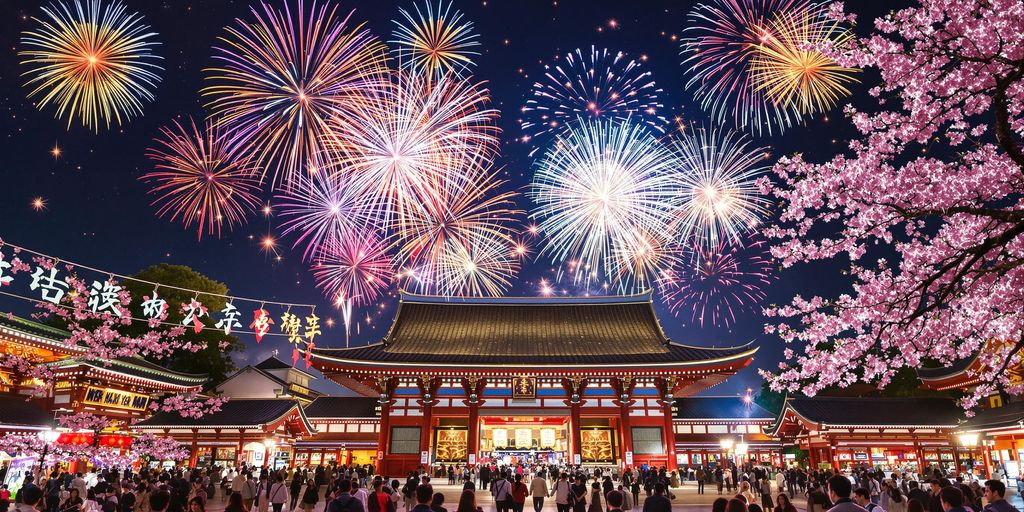
New Year, or Shogatsu, is one of the most important holidays in Japan, and it’s celebrated with a mix of deep tradition and modern festivity. If you’re visiting Japan during this time, you’re in for a unique cultural experience.
Highlights of New Year Traditions
- Hatsumode: This is the first shrine visit of the year, where people pray for health, happiness, and success. Popular shrines like Meiji Jingu in Tokyo or Fushimi Inari in Kyoto draw huge crowds.
- Osechi Ryori: Traditional New Year foods are beautifully arranged in lacquer boxes. Each dish has symbolic meanings, like good fortune or long life.
- Nengajo: Sending New Year postcards is a cherished custom, similar to holiday cards in the West.
Modern Festivities
- Countdown Events: Cities like Tokyo host countdowns with fireworks and live performances. Shibuya Crossing transforms into a lively celebration hub.
- Illuminations: December lights linger into the New Year, making cities sparkle. Tokyo Midtown and Kobe Luminarie are must-sees.
Visiting Japan during New Year offers a blend of serenity and celebration, as ancient customs meet modern cheer. It’s a time to reflect, rejoice, and reset for the year ahead.
Practical Tips
- Plan ahead as transportation and accommodations fill up quickly.
- Many shops and restaurants close for the first few days of January, so stock up on essentials.
- Dress warmly, especially if you’re heading to northern regions like Hokkaido.
For an unforgettable start to the year, Japan’s New Year celebrations are hard to beat.
As the New Year approaches, people around the world celebrate in unique ways. From fireworks lighting up the sky to family gatherings filled with laughter, each culture has its own special traditions. Whether you’re dancing in the streets or enjoying a quiet night at home, it’s a time to reflect on the past year and look forward to new beginnings. Don’t miss out on staying connected during your celebrations! Visit our website to explore our eSIM plans that keep you online wherever you are.
Let’s Pack for a Trip to Japan
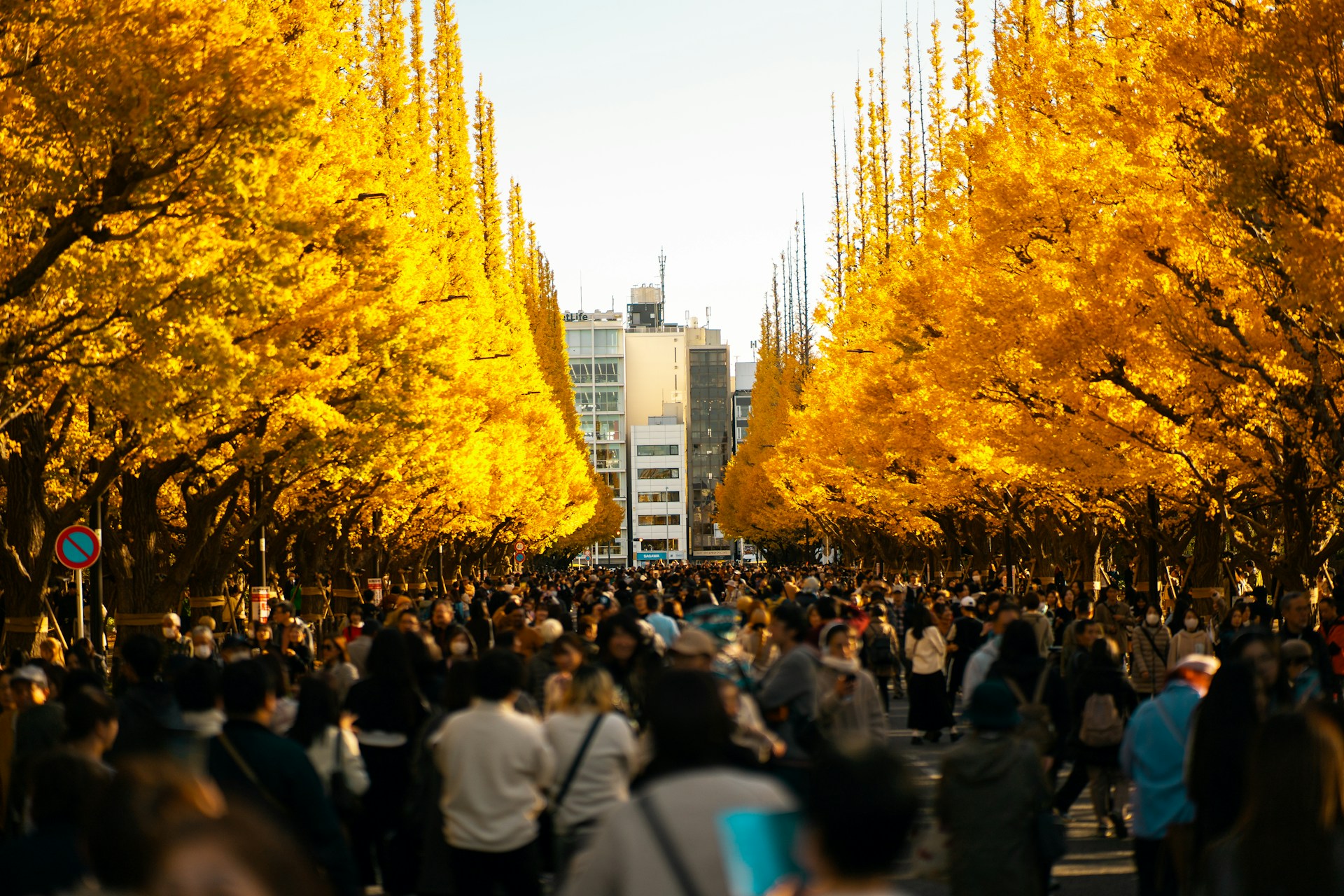
Japan is a country that truly has something to offer year-round, but the best time to visit really depends on what you’re looking for. Spring and fall are perfect for those who want to experience the beauty of cherry blossoms or autumn leaves, while winter offers snowy landscapes and cozy hot springs. Summer, though hot and humid in many areas, is ideal for outdoor adventures in the mountains or up north in Hokkaido. Each season brings its own charm, so whether you’re chasing festivals, food, or just the perfect weather, Japan won’t disappoint. Plan ahead, pack accordingly, and get ready to make some unforgettable memories.
Seamless Mobile Data Everywhere







